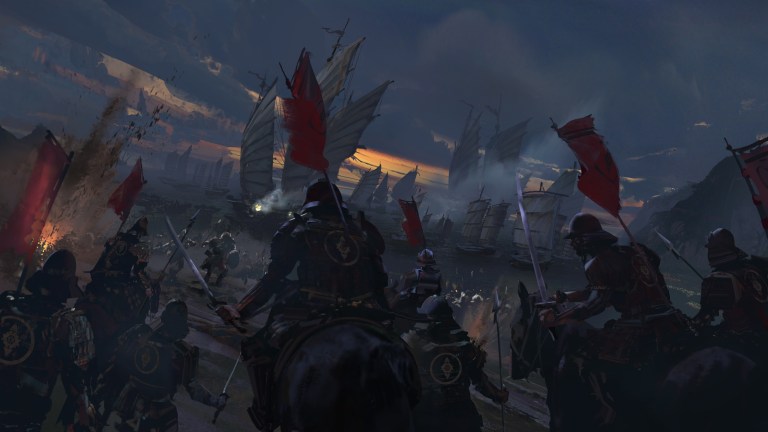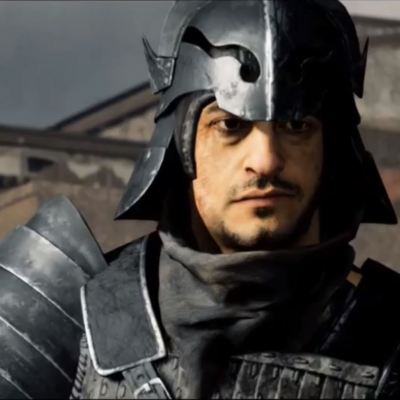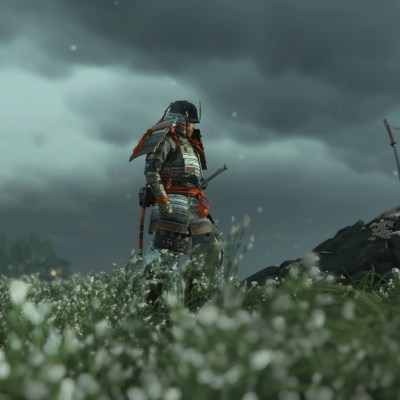Is Ghost of Tsushima Based on a True Story?
Ghost of Tsushima isn't only a love letter to the work of Akira Kurosawa but also a nod to real historical events and true stories.

This Ghost of Tsushima article contains spoilers.
Ghost of Tsushima takes players to 13th-century feudal Japan, transporting them to a time when the legendary samurai fought to protect the country from Mongol invaders. Specifically, the game takes place in 1274 during the invasion of Tsushima Island, a real historical event that would mark the start of a Mongol campaign against Japan.
But while there’s real history laid out as the backbone of the game’s story, developer Sucker Punch Productions took liberties with the events, adding fictional characters and situations to the game as well as nods to the films of Japanese auteur Akira Kurosawa. There are even hints of the supernatural to be found, especially in the game’s Mythic Tales sections.
“This is a game that is entirely grounded in reality,” Sucker Punch creative director Nate Fox told Game Informer. “We’re trying hard to transport people to 1274 Japan. We’re inspired by history, but we’re not building it back stone by stone. We’re not trying to rebuild Tsushima island. Our protagonist is a work of fiction. We actually thought about using some historical figures, and we asked some people who are more culturally aware than us and they said that it would be insensitive, so we didn’t do it.”
As such, protagonist Jin Sakai isn’t based on a historical figure, although some of his actions in the game, such as learning Mongol tactics (the Way of the Ghost) to wage war against the invaders, are inspired by historical events. It was after the Mongol invasion of Japan that the samurai began to adopt advanced weaponry and tactics, such as gunpowder and battle formations over one-on-one duels with enemies.
We see by the end of the game that Jin’s actions as the Ghost have inspired others on Tsushima to join the “Ghost’s army” to help push back the invaders with these new methods. This is what ultimately puts Jin at odds with Lord Shimura, a samurai fiercely loyal to tradition and the warrior code of honor.
At the center of the real invasion of Tsushima Island in 1274 was Kublai Khan, the grandson of Genghis Khan, the infamous first emperor of the Mongol Empire. Kublai Khan was the fifth emperor of the Mongols, whom he ruled from 1260 to 1294. By the time that Kublai Khan decided to invade Japan in an effort to expand his territory further, the Mongol Empire already stretched across most of Asia and parts of Europe. Today, it’s still the largest contiguous land empire in history, although the British Empire remains the largest empire in history in terms of maximum land area.
In 1266, Kublai Khan sent emissaries to Japan with a letter of invitation to join the Mongol Empire as “nobody would wish to resort to arms.” After Japan rejected the invitation, Kublai Khan dispatched several more emissaries between 1268 and 1272, all the while building up his army and preparing his naval fleet to take Japan by force.
Kublai Khan’s first target was Tsushima Island, which is located between Korea and Japan. At the time, the Mongol Empire ruled the Korean Peninsula, making it the perfect launching point for the attack on Japan. Ghost of Tsushima shows us an alternate version of what happened when the Mongol army landed in Tsushima on Oct. 5, 1274, led by the merciless Khotun Khan, a fictional character who seems to be a stand-in for Kublai Khan.
Unlike the events of the game, which sees Jin eventually push back the invaders and kill Khotun Khan, the real-life Mongol Empire completely slaughtered Tsushima’s forces, defeating the samurai led by the island’s governor, Sō Sukekuni, who may have inspired Lord Shimura in the game. The Great Khan’s conquest of the island was so complete that there was little uprising as the invaders moved on to Iki Island and then Kyushu, another island located in the south of Japan.
According to historical accounts from that time, the Mongol army was only pushed back after landing on Kyushu’s Hakata Bay, where they faced fierce opposition from the samurai forces tasked with defending the island. Ultimately, the Mongol generals decided to retreat from the island.
It was during this retreat in November 1274 that a typhoon is said to have struck the Mongol fleet and almost completely decimated the invasion force. This storm was believed by the Japanese to be a “divine wind” sent to protect the country from the Mongols. At the time, some believed the “divine wind” was created by the Shinto god of lightning, thunder, and storm Raijin.
The Japanese translation of “divine wind” is “kamikaze.” During World War II, the Japanese government used the myth of the “divine wind,” a force many believed would protect the country from foreign invasion, as propaganda to recruit pilots for suicide missions during the Pacific campaign of the war. These pilots were also referred to as “kamikaze.”
After his defeat in 1274, Kublai Khan tried to conquer Japan for the second time in 1281, but the Japanese defense forces were ready this time. The country had spent the years between invasions building forts and large stone walls around their territories designed to repel the invaders. Meanwhile, Kublai Khan amassed an army that was said to be as big as 140,000 soldiers and sailors for the attack.
In June 1281, the Mongol army of Japan once again attacked Tsushima and Iki, where the Japanese forces were again defeated. But the Mongol army was still unable to conquer Kyushu after finding it much more difficult to land in Hakata Bay, which was now heavily fortified.
In August, in an event almost too incredible to believe, another typhoon hit the Mongol fleet, destroying most of its ships, the devastation of which the Mongol navy never truly recovered from. After the “divine wind” had saved Japan for the second time, Kublai Khan and the Mongol Empire abandoned its plans to conquer the country.
It’s possible that a Ghost of Tsushima sequel will tackle the events of the Mongol invasion of 1281, but Sucker Punch has not said much about a sequel just yet. You probably shouldn’t expect them to anytime soon, either. It’ll probably be a few years before Sucker Punch announced its next project.
In the meantime, Sucker Punch studio head Brian Fleming has been talking to Polygon about the process of researching 13th-century Japan, the way of the samurai, and what life was like on Tsushima Island during that time.
“It really began with research, and so the creative directors each led a trip. They were accompanied by the personnel from Sony Japan as well. They all went out to Tsushima, stood on the beach where the invasion happened, met with the local artisans,” Fleming explained. “The historians took tons of reference photos, and also visited other historical sites from that period in Japanese history as well, on the mainland, and just began the process of learning. And then we began to locate experts in the religion of the time — the collision between Shintoism and Buddhism that’s going on — and people who are experts in the martial arts. Some of them more modern, some of them traditional, and all of that is the fuel for the fire of then inventing a story and characters and creating a game.”
Sucker Punch took two trips to Tsushima, including one right around the anniversary of the first Mongol invasion of the island.
“Every year still — this is 700-odd years after the invasion — every year they have a festival, and they commemorate the great battle that took place on Komoda Beach,” Fleming said, who also elaborated on the difficulty of pinpointing what events in history actually happened versus what is a bit more open to interpretation in the texts of the time.
“You’re trying to be honest, you’re trying to be careful with the material, and at the same time, even the written histories of the 13th century are really quite spotty. You can go read the most authoritative historical documents and discussions, and even those don’t always line up. There’s not this really crisp sense of ‘this absolutely happened this way.’ Everything has an interpretive quality to it.”
Ultimately, Fleming said that Sucker Punch tried to approach Japanese history and culture with care and respect.
“I think we feel like we’ll succeed if we are really respectful. If we’re careful, and if we, as part of our journey, embrace the learning of the history ourselves — if we just say, ‘Hey, you know, one of the great pleasures of the last five years has been learning a ton.'”
Ghost of Tsushima is out now on the PlayStation 4.


